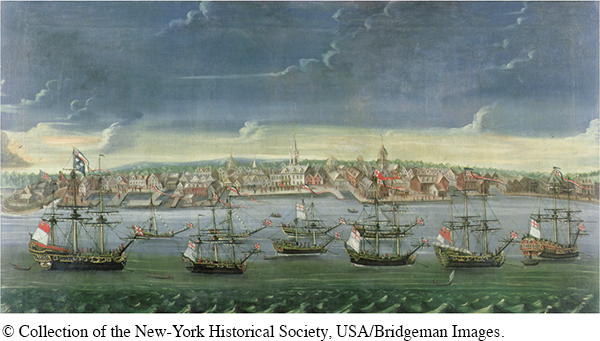The American Promise: Printed Page 109
The American Promise, Value Edition: Printed Page 101
The American Promise: A Concise History: Printed Page 116
Natural Increase and Land Distribution
The American Promise: Printed Page 109
The American Promise, Value Edition: Printed Page 101
The American Promise: A Concise History: Printed Page 116
Page 109The New England population grew mostly by natural increase, much as it had during the seventeenth century. The perils of childbirth gave wives a shorter life expectancy than husbands, but wives often lived to have six, seven, or eight babies. Anne Franklin and her husband Josiah, a soap and candle maker in Boston, had seven children before Anne died. Josiah quickly married his second wife, Abiah, and the couple had ten more children, including their son Benjamin, who became one of the most prominent colonial leaders of the eighteenth century. Like many other New Englanders, Benjamin Franklin felt hemmed in by family pressures and lack of opportunity and moved away from Boston when he was seventeen to “assert my freedom,” as he put it, first in New York and then in Philadelphia.
The growing New England population pressed against a limited amount of land (see Map 5.1). Moreover, as the northernmost group of British colonies, New England had contested frontiers where powerful Native Americans, especially the Iroquois and Mahicans, jealously guarded their territory. The French (and Catholic) colony of New France also menaced the British (and mostly Protestant) New England colonies when provoked by colonial or European disputes.
During the seventeenth century, New England towns parceled out land to individual families. In most cases, the original settlers practiced partible inheritance—that is, they subdivided land more or less equally among sons. By the eighteenth century, the original land allotments had to be further subdivided, and many plots of land became too small to support a family. Sons who could not hope to inherit sufficient land had to move away from the town where they were born.
During the eighteenth century, colonial governments in New England abandoned the seventeenth-
